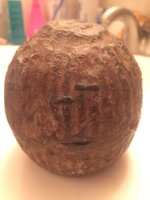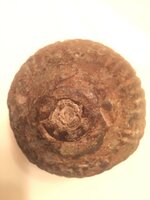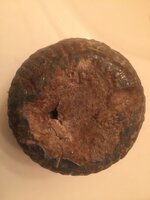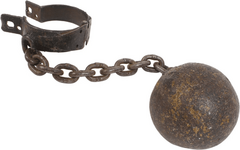


I found it on the east end of Long Island NY.
It has a flat bottom, what appears to be rifling, and it's about 11.5 pounds.
I brought it to a historian today where he told me it was from a British naval ship during the war of 1812. When I got home I searched it to find out more, and couldn't find anything online anywhere describing anything that remotely resembles the shape of this thing.
Also, the historian told me that before it was fired it had another piece on top of it.
The second photo is the top, the last photo is of it's bottom, and it's hollow for the most part.
Can anybody tell me if it was in fact from the war of 1812, what it's made of, how rare it might be, or if it did had a piece on top like the historian described?
Thanks!
Upvote
0







